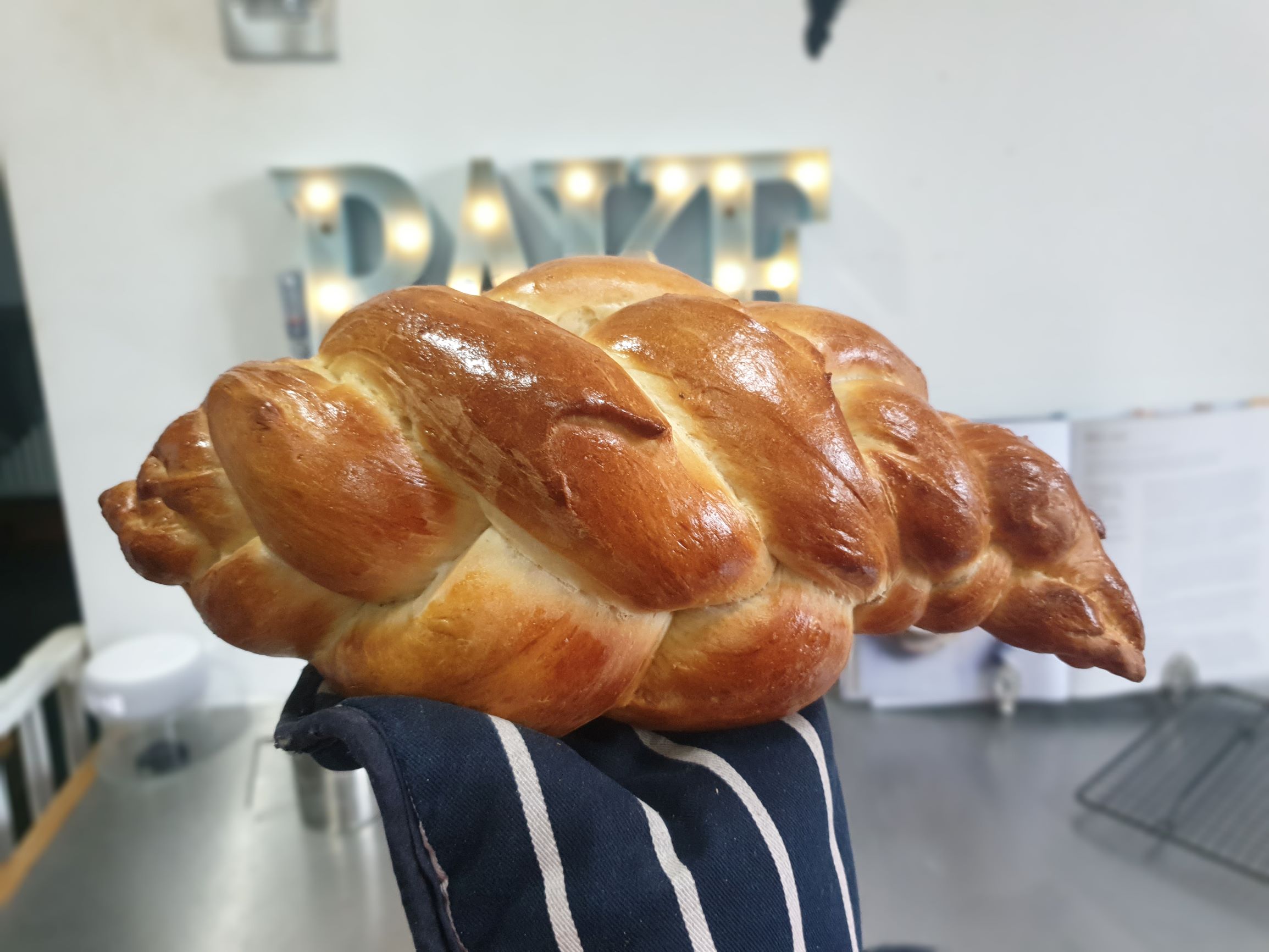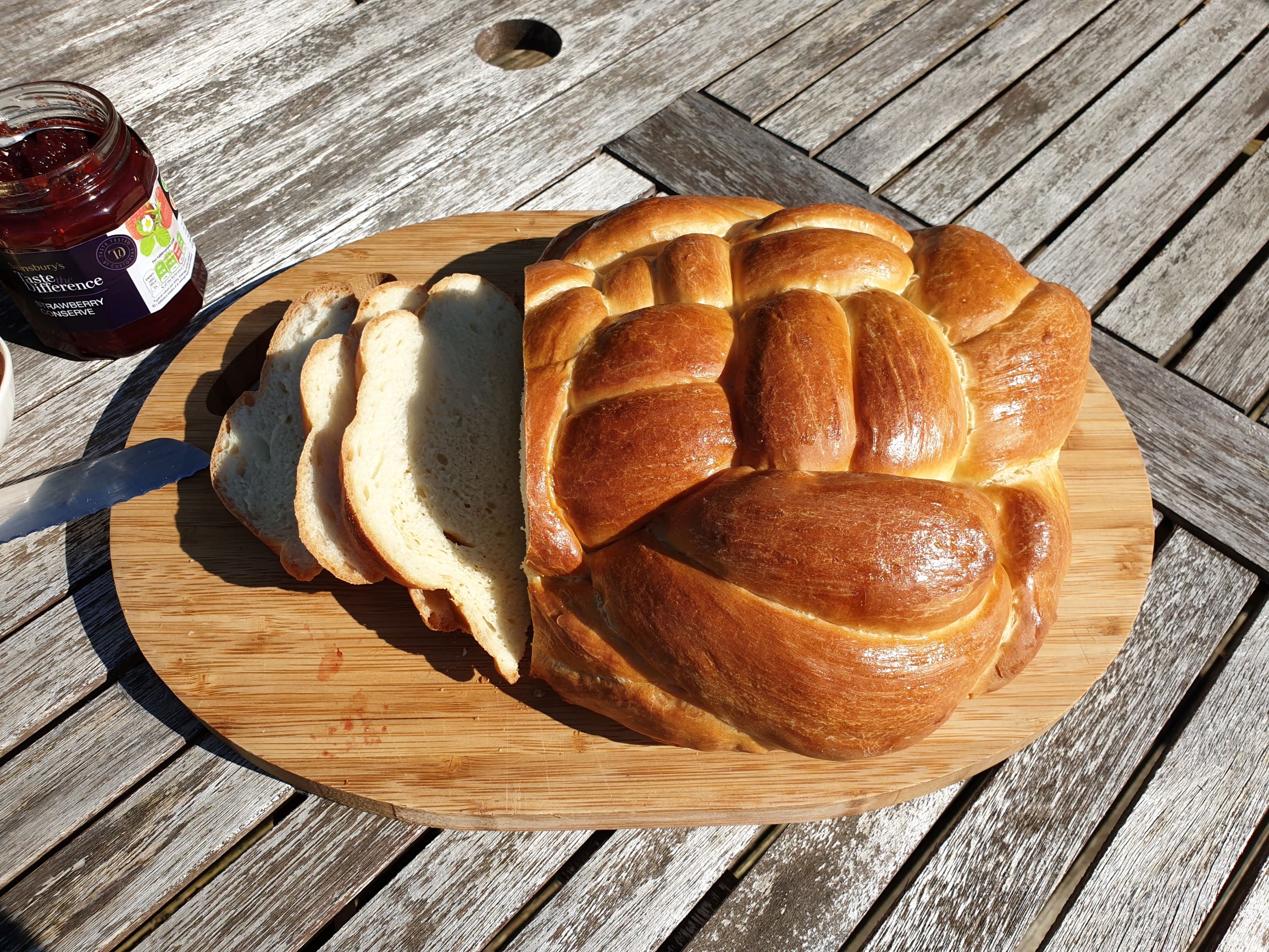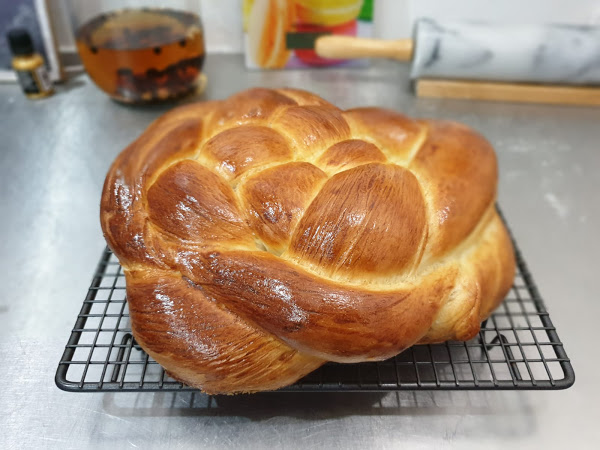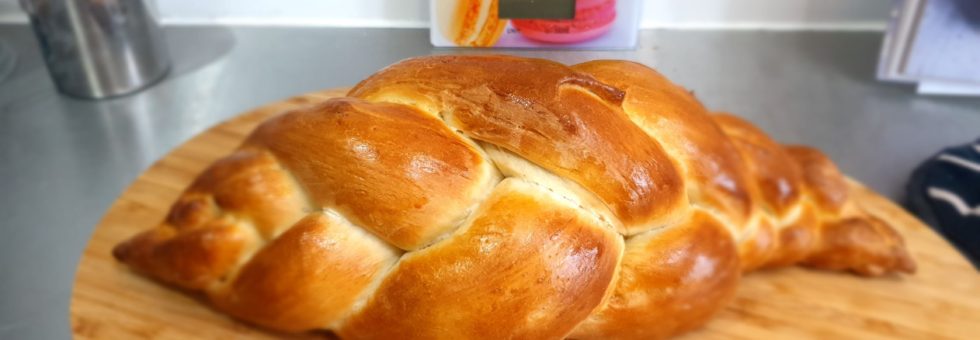Challah…is it me you’re looking for?
While not traditionally Spanish in origin, I was keen to seek out a Spanish challah recipe to make for the sake of it. What can I say? This loaf is eaten everywhere, and the recipe was in Spanish, so that made it fair game.
Baking
Challah is a type of enriched dough, similar to brioche, containing eggs and slightly sweetened with either sugar or honey. It is a Jewish bread traditionally enjoyed on the Sabbath. I’ve made this bread numerous times and I’ve also noticed that recipes sometimes use milk and butter and I am a huge fan of the richness that milk and butter bring to the bread. However, in Judaism it is forbidden to have meat and dairy in the same meal, and challah bread is usually eaten with the Friday night dinner, which generally consists of meat, which sort of defeats the point of it. To make a loaf fit for purpose, water is often used instead of milk and canola oil, known for it’s neutral flavour, instead of butter.
The main reason I was so keen to make challah was because it is usually plaited, which I find very aesthetically pleasing. It’s not until you really explore challah bread that you realise just how many plaits and weaves there are out there beyond the usual three-strand one. The first time I made this I made a used a four-strand technique, which is what the recipe calls for, but this time I decided to stray from the instructions and make a five-strand loaf in a slight ‘s’ shape.
In terms of baking, challah is similar to most loaves, although with the addition of sugar and eggs. There is an initial prove for 1-3 hours, followed by shaping/plaiting and another prove for 30 minutes to an hour. The sugar and glaze give the loaf a wonderful golden colour, which can quickly burn if you’re not careful, so it’s wise to cover it half way through.

Translation
There were a few translation elements I had to consider in this recipe.
The recipe tells the baker to form a “corona” or crown in the bowl with the dry ingredients, which makes little sense to an English audience. We more often talk about making a “well” in the flour in which to add the wet ingredients, which is the same shape and concept.
British recipes will often be chronological in nature, but this isn’t always the case in French and Spanish recipes. Here, the recipe calls for “adding the eggs and water previously beaten together”. It can be unhelpful realising part way through a recipe that something could have been prepared in advance, and in English cookery books we would usually be told the actions in order, so I changed the instructions to be chronological for ease.

Knead to know
“Amasar” is a verb that can mean to mix or to knead, but here it is obvious that kneading is required. The recipe tells you to “dejar levar“. I hadn’t come across “levar” in this context before before, but given the context the dough should be left to rise or prove. Later on the author uses “dejar reposar”, literally, leave to rest, which again, given the context means leave to prove.
When describing what the dough should feel like the author uses “flexible”, but stretchy or elastic is a more accurate description here.
Overall impression
Challah bread is a very satisfying loaf to both make and eat. Being an enriched dough means it is light, airy and flavoursome. Don’t shy away from trying out a plait or weave; the result will be a very rewarding loaf with a beautiful golden sheen.




